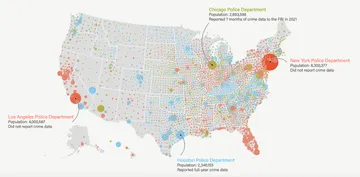Rural Americans who overwhelmingly voted for Donald Trump apparently thought they were dealing a blow to a government they believed had forgotten them.
What they did, though, in the midst of a violent crime spike in rural America, was deal a kneecap to themselves.
How?
They voted for a president whose unleashing of Immigration and Customs Enforcement could be silencing an immigrant community that would otherwise report crime and help drive out an element that's putting rural America in danger.
Take the case of Wilson Rodriguez Macarreno.
Six months ago, the father of three in Tukwila, Washington, dialed 911 on a trespasser after a series of break-in attempts. Barely an hour later, he was swept up by ICE officials and faced deportation to Honduras.
The case garnered national attention. He’s now back with his family in Washington, said Matt Adams of the Northwest Immigrant Rights Project, which is handling his case as well as a civil suit Macarreno brought against officials.
As for whether Macarreno still feels comfortable calling the police, Adams said, “I sincerely doubt it.”
Tukwila is in suburban Washington state, but Macarreno’s rural counterparts would presumably be no more enthusiastic about calling the cops when ICE could potentially get involved.
And with spikes in rural crime, communities need as many folks to remain who care about keeping neighborhoods safe as they can get.
For the first time in a decade, the violent crime rate in rural America rose above the national average. That rise, The Wall Street Journal reported in May, was buoyed by the heroin and opioid epidemic inundating rural communities.
But also rising in those communities is the immigrant population, who could provide much needed assistance in fighting that crime wave if Trump’s crackdown had not put roadblocks in place that have the potential to drive those immigrants underground.
Last year, Tom K. Wong, a professor of political science at the University of California-San Diego, analyzed FBI crime data and found that crime rates were lower in sanctuary cities and counties than in non-sanctuary areas.
The Marshall Project made a similar finding in its analysis of the data.
Wong’s analysis included rural sanctuary areas, which had more than 1,000 crimes per 100,000 people, versus nearly 2,000 crimes per 100,000 people in non-sanctuary rural areas.
He also conducted a survey of undocumented Mexican nationals in San Diego County, 76 percent of which is considered rural. It revealed, among other things, that only 3.4 percent of them would back away from reporting a crime if the cops were not working with ICE. Compare that with the 64.2 percent who stated they would be less likely to report crimes if law enforcement was working with ICE.
Since 1990 more immigrants — largely from Mexico and Central America — have been settling into the rural environs of the Midwest and Southeast.
In fact, a 2018 Pew Research Center analysis found that were it not for some 600,000 immigrants moving into the nation’s rural counties between 2000 and 2014, those counties, which continue to bleed their native-born population, would have lost 950,000 residents.
A 2016 study in the Journal of Ethnicity in Criminal Justice notes that immigrants in most communities also bring a propensity to strengthen social institutions that lead to drops in crime.
As deportation fears force Latinos into silence, rural communities grappling with opioid and heroin crimes spikes won’t only be poorer and sicker for it. They’ll be more dangerous, too.
Tonyaa J. Weathersbee is the metro columnist for The Commercial Appeal in Memphis, Tenn. She holds graduate degrees in mass communication and Latin American studies from The University of Florida. Follow her @tonyaajw, www.tonyaajweathersbee.com , www.facebook.com/tonyaajweathersbee and www.commercialappeal.com
